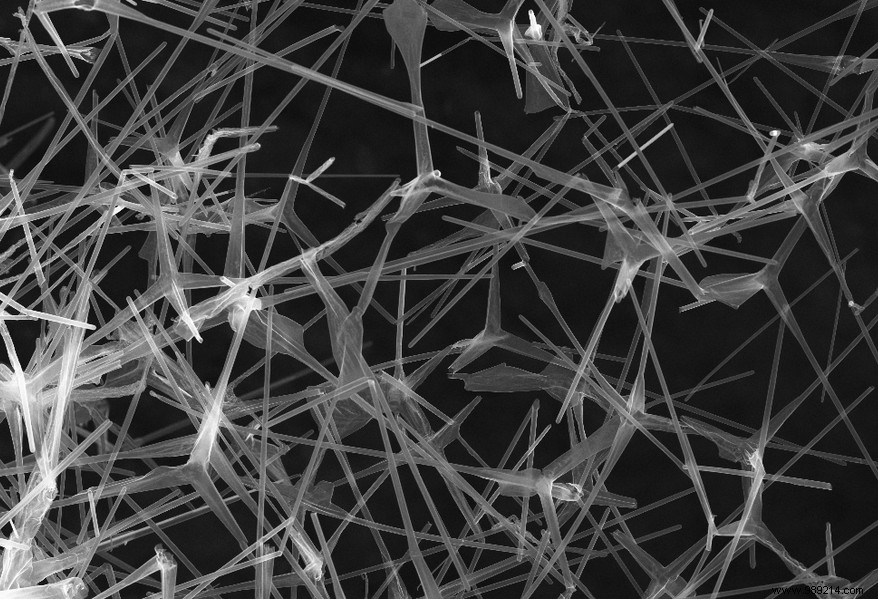When it was created a few years ago, airbrushite was the lightest material in the world. Characterized by a very low density, it has other very interesting features. According to astronomers, aerographite appears to be ideal for the design of photonic sails fitted to a probe that can easily leave our Solar System.
Aerographite (or graphene airgel) is a material made up of an intermingling of carbon nanotubes. However, it is one of the lightest materials available, with a density of only 180 g/m3 . This is a density about seven times lower than the air we breathe (1225 g/m3). Let us recall in passing that aerographite was synthesized by German researchers in 2012, as indicated in a publication in the journal Advanced Materials .
The material has another very interesting characteristic:its darkness. In other words, aerographite absorbs light almost perfectly . Indeed, it reflects less than one photon in a thousand. In addition, the material proves to be a good electrical conductor while benefiting from a surprisingly spongy and elastic structure.
Among the planned applications for aerographite, we can mention in particular a use as an electrode in lithium-ion batteries. The material can also be used as a synthetic fiber for clothing or as an air (or water) purifier. It could even be to fight against oil spills and other large-scale pollution. Indeed, aerographite is able to absorb 900 times its own weight in oil ! However, it could also greatly contribute to space exploration.

It turns out that its lightness and blackness make airbrushite an ideal material in the design of photonic sails equipping a probe. Illuminated by a light, the probe would become able to accelerate very efficiently. Astronomers have thought about the mobility of a sail with a diameter of 1 m and a thickness of 0.5 mm. Released from the ISS, it could reach Mars in just 60 days or even Pluto in 4 years.
Scientists have also established that such a sail with a diameter of 10 m could carry a 55 g payload and easily get out of the Solar System. This could be an interesting first project for an interstellar probe in the direction of Alpha Centauri, the stellar and planetary system closest to ours. There is Proxima Centauri b, a probably telluric planet located in the habitable zone of its star. However, remember that this exoplanet is located 4.25 light years away , that is to say all the same 40 billion kilometers.